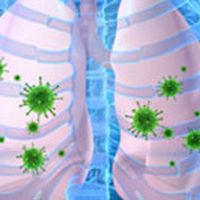Article
Breath Test Assists in Fight Against Antibiotic Resistance
Author(s):
Antibiotic resistance is an ongoing battle and a new method of testing for deadly infections may help prevent physicians from prescribing unnecessary medications.

Antibiotic resistance is an ongoing battle and a new method of testing for deadly infections may help prevent physicians from prescribing unnecessary medications.
Pneumonia, which is caused by Streptococcus pneumoniae, kills 5-7% of the approximately 900,000 Americans who are infected each year, according to the Centers for Disease Control and Prevention (CDC). The lung infection has already been marked as the number-one global cause of death in children under the age of 5 and recently was shown to damage DNA. A team of researchers from Manchester University and Salford Royal NHS Foundation Trust developed a breath test that can accurately detect pathogens in the respiratory system. Although pneumonia can be treated with antibiotics, that creates other challenges.
“Pneumonia can difficult to detect and diagnose and because of that, we tend to use potent broad spectrum antibiotics in anyone who shows symptoms of infection,” Paul Dark, BSc, MB, ChB, PhD, FRCS, FRCEM, FFICM, of Salford Royal, said in a news release.
The breath volatile surveillances the lower airway and determines the presence of pathogens. Breath data was collected from 46 patients with sterile brain injury in intubation and ventilation in the intensive care unit 3 times per week from admission to up to 10 days. Dark noted that the participants — with an average age of 49 and 27 males – were more susceptible to infections due to the hospital setting.
“Breath data were recorded as retention time/mass ion pairs, and analyzed (pathogen present vs absent) by ANOVA-mean centre principal component analysis,” the authors wrote.
According to the findings documented in Thorax, there was a clear distinction in breath profiles with either the presence or absence of S. pneumoniae. The breath volatile analysis could reveal pathogens in the lower respiratory tract even if the amount was not significant. Not only can this technology help improve diagnoses, but it can fight the rising antibiotic resistance problem.
“Now we know that it’s feasible to capture and measure breath chemicals of patients on mechanical ventilators, we plan to develop a simple non-invasive system that will be part of the normal connections on the machine,” said Stephen Fowler, MD, of Manchester University.
The team plans to continue working on this development for at least the next 3 years. The findings have the potential to help create more surveillance systems and impact clinical practices.


